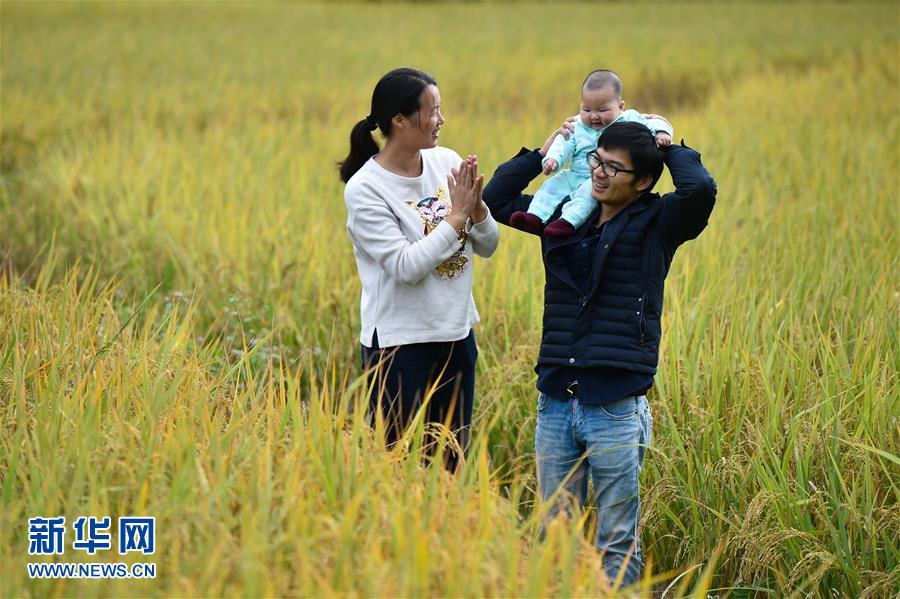Liu Fue: "Chinese wolfberry fans" in the eyes of Qi Nong
In late autumn, more than 13,000 mu of Chinese wolfberry in Jinghe County has been harvested, and farmers are busy calculating the harvest, while Liu Fue, who calls herself a "wolfberry fan", has been concerned about the disease resistance, survival rate and quality of different varieties of Chinese wolfberry.
Liu Fue is the director of the technical development department of the Chinese wolfberry development and management center in Jinghe County. Her interest in Chinese wolfberry began more than 30 years ago.
In the summer of 1984, Liu Fue was assigned to work at the agricultural science station in Tuoli Town, Jinghe County. since then, the red fruit growing on the Gobi Desert in Jinghe County attracted her attention.
In the first few years of her work, Liu Fue always went to the fields with the farmers to observe the sowing skills and record the growth process of Chinese wolfberry. She worked hard in the fields like a farmer.
Gradually, Liu Fue knew every aspect of growing Chinese wolfberry like the back of her hand. In 2005, the development and management center of Chinese wolfberry in Jinghe County was established, and Liu Fue became a researcher of Chinese wolfberry in the center.
"Chinese wolfberry planting, field management, including planting patterns and other details will affect the quality of Chinese wolfberry." On November 1, Liu Fue said to the author.
For a long time, the occupation rate of fine varieties of Jinghe Chinese wolfberry is low, and the occurrence of diseases and insect pests is serious, which can not meet the market demand for high-quality Chinese wolfberry products, and the income of farmers planting Chinese wolfberry is low. In order to find the answer, Liu Fu-E studied in the field during the day, and at night she plunged into a pile of materials to study and compare, and finally got the answer: everything should start with the variety.
Liu Fue and other technicians introduced six excellent varieties of Chinese wolfberry. Through planting contrast experiments, three varieties, such as "Ningqi 1", which are suitable for growth in Jinghe area, were selected. They took the lead in compiling six sets of technical manuals for cultivation and pruning of new varieties of Chinese wolfberry, and taught barberry farmers pruning techniques hand-in-hand to explain the main points of planting.
Liu Fue realized that the development of Chinese wolfberry industry can not only rely on varieties introduced from outside, Jinghe County should also have its own varieties. In order to select new varieties, she and her colleagues shuttled through the wolfberry fields all day, conducting a general survey of 100000 mu of Jinghe wolfberry high-yield garden.
"the growth process of Chinese wolfberry is affected by climate, humidity and many other external factors, so we must determine and be familiar with the growth characteristics of a variety under any conditions." Liu Fue said.
After a large number of screening and comparative experiments, Liu Fue and his colleagues selected and bred four excellent varieties of "Jingqi 2", "Jingqi 4", "Jingqi 5" and "Jingqi 7", and successfully popularized the seedling raising technology of hard and tender branches of Chinese wolfberry. Jinghe Chinese wolfberry seedlings have been popularized.
From then on, farmers no longer pull seedlings from outside, but buy them from their doorstep. Now Jinghe County high-quality Chinese wolfberry seedlings can not only meet the needs of local Chinese wolfberry development, but also far for all parts of southern and northern Xinjiang, some can also go out of Xinjiang, Jinghe Chinese wolfberry seedlings have formed a new industrial chain.
Sometimes, Liu Fu-E would go into the field and stare straight at a Chinese wolfberry. At first, the farmers thought it strange, but later they all said, "it turns out that the Chinese wolfberry fan has come. She studies the prevention and control of diseases and insect pests of Chinese wolfberry."
Liu Fue said: "this year I observed and filmed a video of the transfer of Chinese wolfberry gall mites from the gall mite gall spots, which is a great achievement. In the end, all our research should serve the farmers, which is our duty and mission as a party member and a technician, so I must take it seriously. I know that the autonomous region also attaches great importance to the forest and fruit industry, which is also an incentive for me. I will continue to cheer and contribute to the development of Chinese wolfberry industry! "
- Prev

The left-behind woman in Bishan turned into an expert grower and led the villagers to the road of getting rich.
The left-behind woman in Bishan turned into an expert grower and led the villagers to the road of getting rich.
- Next

In the golden field-- the harvest of "post-80s" and "rice couple"
In the golden field-- the harvest of "post-80s" and "rice couple"
Related
- A course of planting techniques and methods on how to grow carrots
- How to plant the latest tulips?
- Is it better to pick tea in the morning or in the afternoon? When is the best time for tea to be picked? what is the third or fifth tea?
- Launch Yuanxiao Happy combination Haocha + Tea Yuan healthy Taste
- Penghu Tourism "Fireworks 20 Parade with You"
- 2022 West Lake Happiness holds "Digital Revitalization Voucher" and draws iphone13 and laptop.
- Banqiao Fuzhou social houses are designed to change start-up combined with police elimination to create a safe and livable environment
- The convenient measure of "mechanical weeding" in Xinbei has been abused and the Agriculture Bureau has imposed heavy penalties on the illegal land consolidation.
- Changgeng University Joins Hands with Four Memory Factories to Rescue Memory Talent Shortage
- The list of Taiwan's top 100 MVP managers is listed by the Director-General of the Farmers' Association of Sanxia District.

